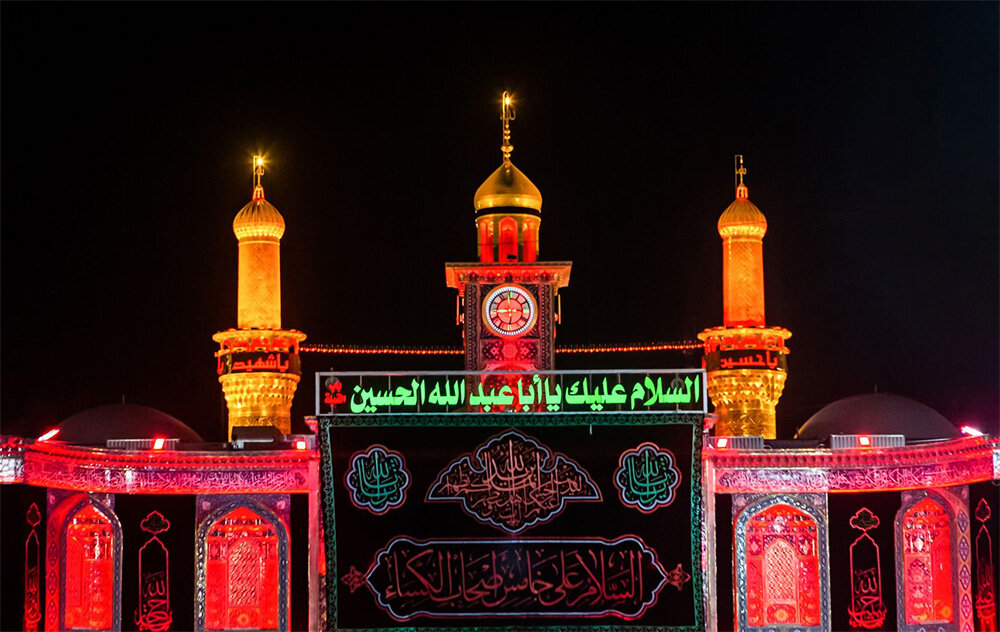The world prepares for big day

TEHRAN – With the first ten days of Muharram rolling around, millions of Shia Muslims in Iran and beyond prepare to commemorate the anniversary of the tragic martyrdom of Imam Hussein (AS) and his companions.
Muharram religious rituals, which culminate in Ashura (literally meaning 10 as the battle of Karbala took place on the 10th day of the month), are held annually with special arrangements. During these ten days, mourners gather in settings called “Majlis Aza’a,” which means a mourning gathering and often includes two parts: the first part is held inside a mosque or Hussainiya and features a cleric reciting the virtues of the Imam while the second part features a panegyrist reciting poems to a chest-beating crowd of mourners.
The Day of Ashura marks the martyrdom anniversary of Imam Hussein (AS), the grandson of the Prophet Mohammad (PBUH) who got martyred in the Battle of Karbala on October 10, 680 (Muharram 10, 61 AH), nearly 14 centuries ago.
Although centuries have passed since that event, it continues to inspire countless numbers of Shia Muslims and even non-Muslims around the world to borrow a page from Imam Hussein’s altruistic book in their quest for freedom and emancipation. Imam Hussein (AS) was a renowned Muslim figure in Medina who was known for piety and virtue. Around the same time, a succession was taking place in Damascus, the seat of the Umayyad caliphate, which resulted in Mu'awiyah naming Yazid the next caliph, a move that sent shockwaves across the Muslim world as Yazid wasn’t qualified for assuming the leadership of the nascent Islamic government.
What made things even worse was Yazid’s insistence on making Imam Hussein pledge allegiance to his illegitimate rule. Imam Hussein refused to do so and left Medina for Mecca and then for Kufa in Iraq where he ultimately was heartbreakingly martyred by the army of Yazid.
His martyrdom inspired many uprisings against unjust rulers throughout Islamic history, the most recent of which was the 1979 Islamic revolution in Iran that brought down the oppressive Shah regime.
Also, Imam Hussein’s martyrdom has been inspiring to many resistance groups in the West Asia region. “We learned perseverance and steadfastness in our own path from Imam Hussein (AS), his companions, and the martyrs of Karbala,” said Seyed Hassan Nasrallah, secretary-general of Lebanon’s Hezbollah, in 2021. “If we are killed and burned a million times, we will never abandon Imam Hussein (AS),” he added.
In the same speech, that was delivered on the occasion of Ashura of 2021, the secretary-general of Hezbollah summarized how Ashura has inspired them. “The event of Karbala taught us not to be impartial in helping the right and countering the wrong. This is a lesson that the Islamic resistance has learned,” he said.
The leader of the Islamic Revolution of Iran, Ayatollah Seyed Ali Khamenei, has also underlined the need for today’s youth to follow in the footsteps of Imam Hussein. Ayatollah Khamenei has said that this path is one of success.
“The path of Imam Hussein is a blessed path; it is a sweet, successful path. It is a path that definitely gives results. God willing, you will be able to be inspired by Hussein’s movement and Hussein’s teachings and bring this country to the peak of spiritual and material felicity in the true sense of the word. This is the way. This is the path. The right way is to move in the light of the guidance of Hussein, the Imams (peace be upon them), the Qur’an and the Holy Prophet’s Household,” he said in a speech delivered on September 27, 2021, at the end of a mourning ceremony for Arbaeen.
Leave a Comment